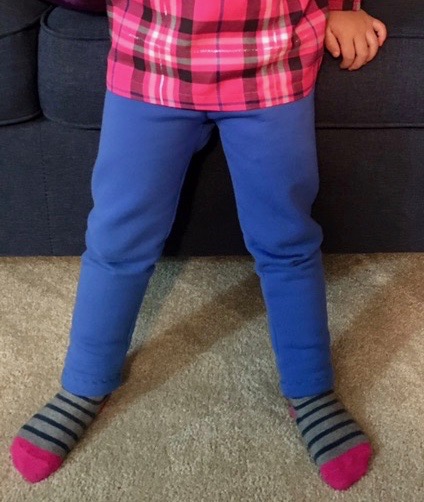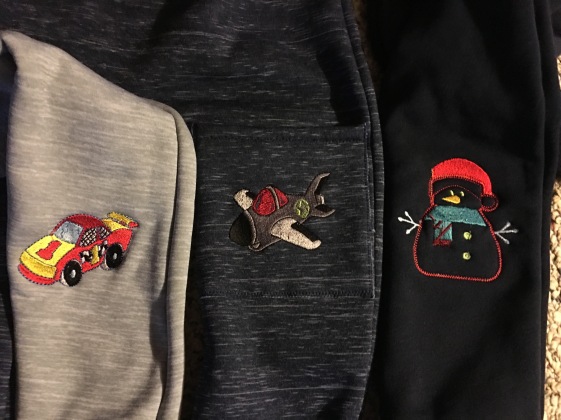
PowerStretch Leggings
Because the midwest USA is experiencing very cold weather, I am reminded of how important it is for children to have warm leggings. While regular leggings are great, they just aren’t warm enough for bitter and cold midwestern winters.
Each winter for the past 8 or 9 years, I’ve sewn winter leggings for my grand-daughters using Polartec Powerstretch. This year I sewed about 10 or 11 pair as requested by my son and daughters as they’ve come to rely on these leggings as essential winter fare. Sixteen year old granddaughter Mira still requested new leggings this year, as last year’s were too small. With a 3 year old grandson in the mix, I also made leggings for him. Because I’ve acquired a new embroidery machine in the past year, I added pockets and embroidery this year.

Patterns:
The patterns for these leggings were Go To Leggings and Ottobre Funny Legs . The $10 for the Go To Leggings pattern was a wise expenditure as I’ve used it more than 25 times in a variety of sizes. Or your favorite leggings patterns would work as well.


Fabric:
For all of the leggings I used Polartec Powerstretch, which a smooth outside, fleece inside and has both horizontal and vertical stretch. This makes the leggings easy to wear and the fleece inside is so cozy. This year I purchased the fabric at Mill Yardage and The Fabric Fairy. Powerstretch comes in light and medium weights and either will work for these leggings. Of the two types I purchased this year, Mill Yardage had medium weight and the yardage from The Fabric Fairy was lighter in weight but also stretchier, which is always a nice feature for leggings.
Construction:
Serging has always been my preferred stitch for this type of garment and for stretch fabric however you could use a narrow zig-zag or a stretch stitch on a regular sewing machine. For the waistband, I serged 3/4″ elastic to the top of the pants and then turned it over and top stitched with a narrow zig-zag stitch. To finish the hems I turned the hem under and top-stitched with a simple zig-zag stitch.

So if the children in your life are in need of warm leggings, consider using Polartec Powerstretch. As for purchasing the fabric, snatch it up early in the season as the color selection sells out quickly.
Happy sewing.
































